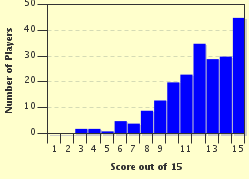Quiz Answer Key and Fun Facts
1. "I've been a puppet, a pauper, a pirate, a poet, a pawn and a king
I've been up and down and over and out and I know one thing
Each time I find myself flat on my face
I pick myself up and get back in the race"
These are lines from one of "the" definitive songs from the Sinatra catalogue. Which one?
2. Just a minor Number 21 hit for Dick Haymes a decade earlier, Sinatra made it the opening track for his enormous 1956 LP "Songs for Swingin' Lovers". What ditty was this?
"The moment that you speak, I wanna go play hide-and-seek
I wanna go and bounce the moon just like a toy balloon
You and I are just like a couple of tots
Running across the meadow picking up lots of forget-me-nots"
3. "Life's a beautiful thing
Long as I hang on to the string
I'd be a silly so and so
If I should ever let it go"
So, what was it that Frank had at the end of his string that made life so beautiful?
4. Frank Sinatra's last Billboard Top 40 hit charted in 1980 when "Ole Blue Eyes" was 64. With the following lyrical clue, I'm asking you to identify the city that ultimately became most associated with him because of this song. One line as a clue should suffice!
"Start spreading the news, I'm leaving today"
5. Sinatra only had two Number One Billboard hits during the modern era, post 1955. This song wasn't one of them but perhaps it should have been. Can you name this Number Six classic from 1958 with help from this lyric segment?
"When you arouse the need in me
My heart says yes indeed in me
Proceed with what your leading me to
It's such an ancient pitch
But one I wouldn't switch"
6. "Under the hide of me
There's an oh such a hungry yearning inside of me
And this torment won't be through
Till you let me spend my life making love to you"
These words were penned by Cole Porter, one of Sinatra's favorite musical resources. What song was it?
7. This whole quiz could be completely filled with Cole Porter numbers, but this favorite of Frank's is an essential. Here's your lyrical assist.
"I'd sacrifice anything come what might
For the sake of having you near
In spite of a warning voice that comes in the night
And repeats, repeats in my ear"
8. In 1963, a song that had been floating around for ten years became an overnight sensation and Sinatra joined the fray with his own rendition. It was a song that might have been a favorite of Ralph Kramden's. Do you recognize these lines?
"Fill my heart with song let me sing for ever more
You are all I long for all I worship and adore
In other words, please be true
In other words, I love you."
9. "Just who can solve its mystery?
Why should it make a fool of me?
I saw you there one wonderful day
You took my heart and threw my heart away
That's why I ask the Lord in Heaven above"
Another great Cole Porter song with a superb Sinatra treatment. What is the question they are asking?
10. A song making its debut in the 1937 production of Rodgers and Hart's "Babes In Arms" became not only a Great American Songbook standard but nineteen years later, one of Sinatra's signature songs. Your lyrical clue.
"Doesn't like crap games with barons or earls
Won't go to Harlem in ermine and pearls
Won't dish the dirt with the rest of the girls"
11. A wistful ballad Sinatra recorded in late 1965 had him nostalgically recounting the past loves of his life when he was 17, 21 and 35. Will the following lines help you recognize the song, a Number 28 Billboard hit?
"But now the days are short
I'm in the autumn of my years
And I think of my life as vintage wine
From fine old kegs
From the brim to the dregs
It poured sweet and clear"
12. In 1954 Sinatra scored his first significant hit in ages with a simple yet uplifting number. This lyrical clue should help you decipher the answer.
"You can go to extremes with impossible schemes
You can laugh when your dreams fall apart at the seams
And life gets more exciting with each passing day
And love is either in your heart or on the way"
13. Sinatra liked to sing about a place where "they have the time, the time of their life", and where "I saw a man, he danced with his wife". It was "the town that Billy Sunday couldn't shut down". What "toddling" town was it?
14. Harold Arlen and Johnny Mercer collaborated on one of Sinatra's more memorable songs, a saloon ballad of the highest order. Do you remember this one?
"It's quarter to three, there's no one in the place except you and me
So, set 'em up, Joe, I got a little story you oughta know"
15. Many of the songs presented in this quiz seemed to have been written with Sinatra in mind. None were... but this one was!
"And now, the end is near
And so I face the final curtain
My friend, I'll say it clear
I'll state my case, of which I'm certain"
Which songwriter, who also composed the theme to "The Tonight Show", wrote the lyrics to "My Way"?
Source: Author
maddogrick16
This quiz was reviewed by FunTrivia editor
agony before going online.
Any errors found in FunTrivia content are routinely corrected through our feedback system.

